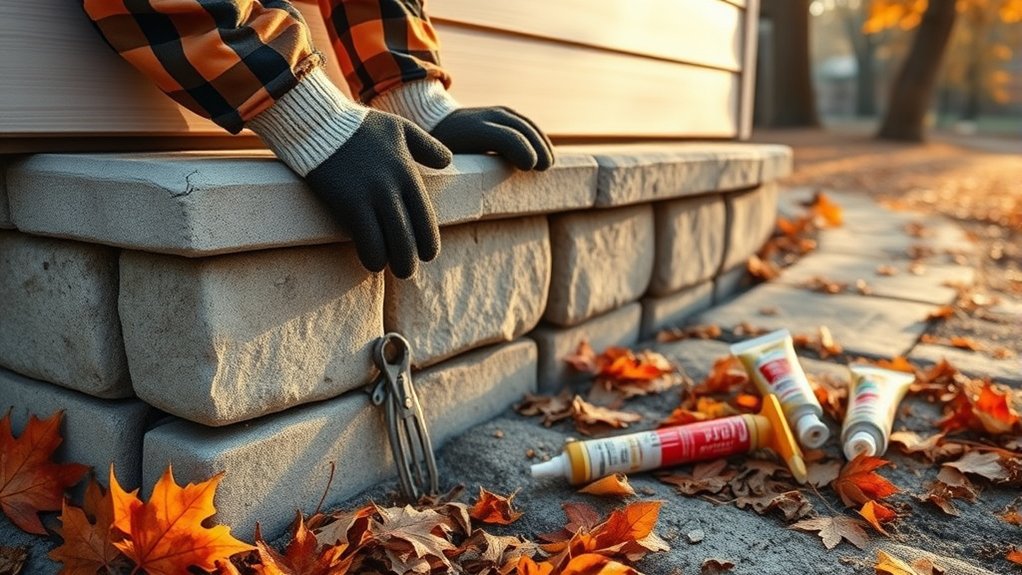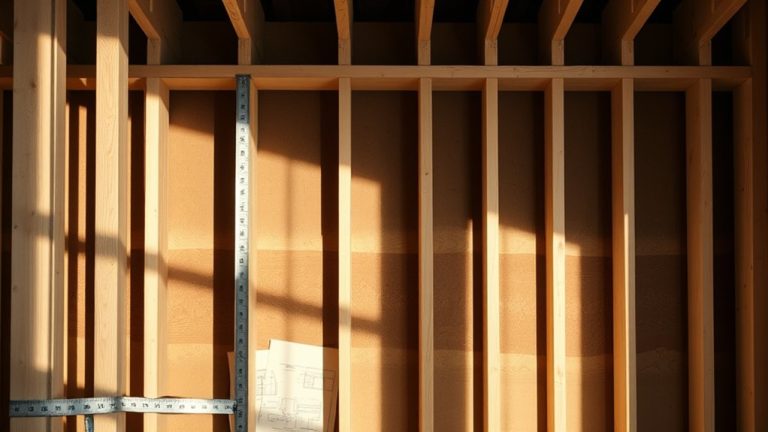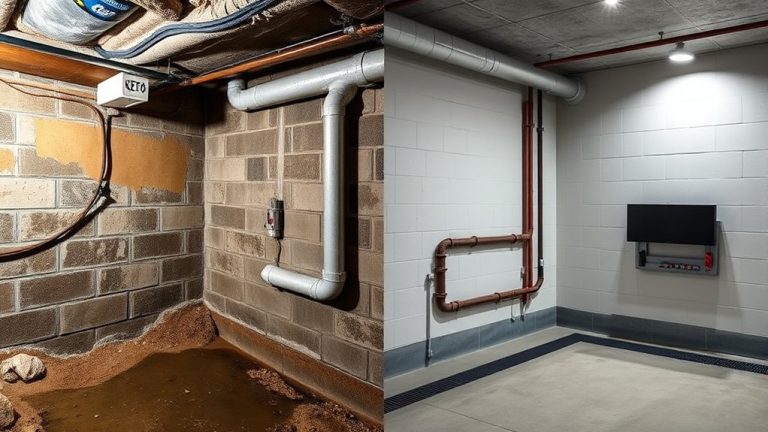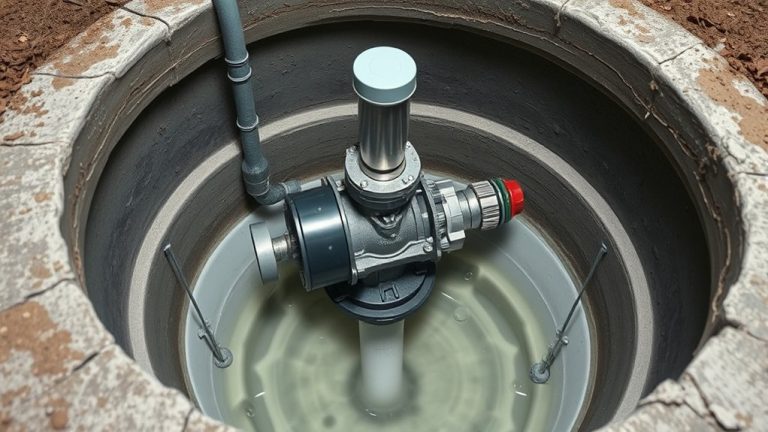As winter approaches, your home's foundation becomes vulnerable to potential damage. Protecting it requires strategic preparation and proactive maintenance. Ignoring small issues now could lead to costly repairs later. Your foundation's health depends on careful inspection and preventive measures. Are you ready to safeguard your most significant investment before the first frost hits?
Key Takeaways
- Thoroughly inspect foundation walls for cracks, chips, and potential structural damage that could worsen during winter freezing conditions.
- Clean and extend gutter downspouts to ensure proper water drainage, preventing moisture accumulation near the home's foundation.
- Seal basement windows, entry points, and window wells with caulk, weatherstripping, and waterproof sealant to prevent water infiltration.
- Maintain proper soil grading around the home's perimeter to direct water flow away from the foundation and prevent erosion.
- Repair exterior concrete and masonry surfaces, addressing small cracks and potential settlement issues before winter temperatures arrive.
Inspect Your Foundation for Existing Cracks and Damage
Foundation issues can quickly escalate from minor concerns to major structural problems if left unchecked. You'll want to carefully inspect exterior walls for any visible cracks, chips, or signs of wear before winter sets in. Horizontal cracks or stair step cracks in your foundation mortar joints can be particularly dangerous and require immediate professional attention. Walk around your home's perimeter and look closely at the foundation's surface, checking for hairline fractures or wider gaps that might indicate deeper structural challenges. Don't forget to inspect underground components, using a flashlight to illuminate, shed light on, or illuminate potential problem areas. Small cracks today could become expensive repairs tomorrow, so take the time to thoroughly assess your foundation's condition.
Clean and Clear Foundation Drainage Systems
Clearing and maintaining your home's drainage systems is essential for safeguarding your foundation from water damage and potential structural issues.
You'll want to carefully inspect drainage systems around your property, paying close attention to gutter downspouts and their ability to direct water away from your foundation. Remove any debris, leaves, or blockages that could impede proper water flow.
Check that downspouts extend at least four feet from your home's base, ensuring water moves far enough to prevent pooling. Regular maintenance prevents costly foundation repairs and protects your home's structural integrity.
Yard drainage solutions can help prevent water accumulation near your foundation, mitigating potential damage and reducing the risk of basement moisture issues.
Seal Window Wells and Basement Entry Points
As winter approaches, protecting your home's vulnerable entry points becomes essential for preventing moisture infiltration and potential damage. You'll want to inspect basement windows carefully, checking for cracks, gaps, or worn seals that could allow water and cold air to enter. Use high-quality caulk and weatherstripping to seal these areas thoroughly, ensuring a tight barrier against winter's harsh elements.
Pay special attention to window wells, applying waterproof sealant around edges and replacing any damaged materials. By taking these proactive steps, you'll protect your foundation from potential water damage and improve your home's overall energy efficiency.
Check and Repair Exterior Concrete and Masonry
Look out for signs of wear and tear on your home's exterior concrete and masonry before winter sets in. Identify foundation settlement by checking for uneven surfaces, cracks, or shifting.
Inspect mortar condition carefully, watching for crumbling or gaps between bricks and stones. These issues can worsen during freezing temperatures, potentially leading to more extensive damage.
Take action now by sealing small cracks with appropriate concrete or masonry repair compounds. If you notice significant structural problems, don't hesitate to consult a professional who can assess and recommend targeted repairs.
Manage Landscaping and Soil Grading Around Your Home
Proper landscaping and soil grading are crucial for protecting your home's foundation and preventing water damage during the fall season. You'll want to maintain proper soil grade by ensuring the ground slopes away from your home's foundation at a gentle angle, which helps direct water flow and reduces potential moisture buildup.
Address overgrown vegetation that might conceal foundation issues or contribute to soil erosion. Trim bushes and trees near your home's perimeter, creating space for inspection and preventing root systems from compromising structural integrity. These strategic landscaping steps will safeguard your home's foundation against winter's harsh elements.
Protect Exposed Pipes and Plumbing
Winter's icy grip can wreak havoc on unprotected plumbing, making pipe insulation a critical fall maintenance task. You'll want to insulate exposed pipes in unheated areas like basements, crawl spaces, and attics to prevent freezing and potential burst pipes.
Add heat tape to vulnerable sections for extra protection against cold temperatures. By taking these proactive steps, you'll safeguard your home's plumbing system and avoid costly repairs.
Don't overlook outdoor faucets and irrigation lines—they're especially susceptible to freezing damage. A little preparation now can save you significant headaches and expense during the winter months.
Ensure Proper Insulation and Moisture Control
How can you protect your home's comfort and energy efficiency this fall? Review ventilation options and evaluate insulation materials to safeguard your living space. Consider these critical steps:
- Inspect attic and wall insulation for gaps, wear, or inadequate coverage
- Check basement and crawl space for potential moisture buildup
- Seal air leaks around windows, doors, and foundation to prevent heat loss
Schedule Professional Foundation Assessment
Let's dig into why a professional foundation assessment can head off potential costly repairs before they spiral out of control. By scheduling a professional foundation crack analysis, you'll gain critical *reflections* into your home's structural health.
Trained experts will thoroughly inspect your foundation, identifying potential weaknesses that could compromise your property's integrity. They'll provide a detailed professional foundation repair estimate, helping you budget and plan proactively.
Don't wait until small issues become expensive problems – investing in a preventative assessment now can save you thousands in future repairs and protect your most *prized* asset.
Frequently Asked Questions
How Often Should I Inspect My Home's Foundation?
You'll want to inspect your foundation twice yearly, focusing on proper grading and seasonal shifts. Check for cracks, water drainage issues, and structural changes to protect your home's integrity.
Can Minor Cracks Lead to Serious Structural Problems?
Minor cracks can escalate if you ignore soil conditions and foundation stress. They'll worsen with moisture and temperature changes, potentially compromising your home's structural integrity if left unchecked and untreated.
What Are Signs of Potential Foundation Damage?
Watch for uneven floors, shifting walls, and doors that won't close properly. These signs can indicate foundation issues that'll compromise your home's structural integrity and your freedom to live comfortably.
Is DIY Foundation Repair Recommended or Should I Hire Professionals?
While DIY foundation inspection can help, complex repairs need professionals. You'll save money and prevent further damage by getting a professional foundation evaluation before attempting major fixes yourself.
How Much Does a Typical Foundation Repair Cost?
Foundation repair costs range from $2,000 to $7,500, depending on damage severity. You'll find average pricing varies by method, with minor cracks costing less and major structural issues demanding significant investment.



